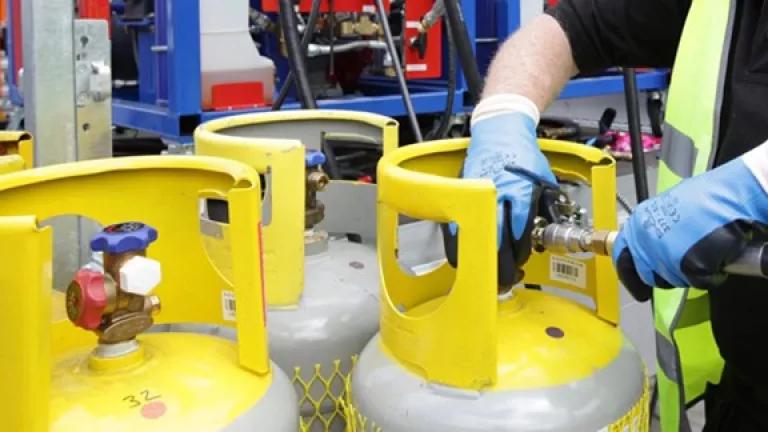The apparel industry is one of the biggest polluters on the planet. Textile mills generate one-fifth of the world's industrial water pollution and use 20,000 chemicals, many of them carcinogenic, to make clothes. Chinese textile factories alone produce about three billion tons of soot—air pollution linked to respiratory and heart disease—every year by burning coal for energy. Most of the world's textile factories are in developing countries where governments can't keep pace with the industry’s massive pollution footprint.
NRDC's Clean By Design initiative works with major apparel retailers and brands by using their buying power as leverage to clean up the factories in their supply chains. Our experts study textile mills abroad and identify simple ways to reduce pollution and cut water, chemical, and energy use while saving money. Through the program, we promote a 10-step process designed to reduce the hottest spot of the industry’s environmental impact: dyeing and finishing. As we encourage factories to adopt these best practices to save water, fuel, and electricity, we also push them to track water, steam, and electricity use.
In partnership with major brands like Target, Gap, and H&M, as well as with high-profile designer Stella McCartney, NRDC has introduced Clean by Design to nearly 200 textile mills and has tracked about 50 of them to quantify the results. Every mill using the program—old and new, large and small, cotton and synthetic, woven and knit—has seen huge benefits. Each mill in the 2014 program reduced water use by up to 36 percent and cut energy use by as much as 22 percent while also cutting 400 tons of chemicals from their processes. An added bonus? Each mill saved an average of nearly $500,000.
As we continue to see success, we are reaching more factories and providing innovative training to drive changes. As we add more multinational apparel retailers and brands in the program, we are also promoting better sourcing programs that consider environmental performance when qualifying and evaluating suppliers.
With successes now in hand, Clean by Design is poised to become a self-sustaining tool for change within the industry. In 2015 and 2016, NRDC is partnering with the Sustainable Apparel Coalition, which represents more than 30 percent of global clothing manufacturing, from discount retailers to sports labels to high-end fashion. The group’s membership is committed to assessing and improving the environmental performance of factories in their supply chains; Clean by Design offers the system to achieve these goals.



